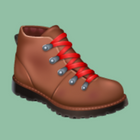Searching for plants in the wild always seems to unlock a primal part of the brain. It’s a part of who we are as a species, and I always enjoy the search.
With that said, the reality is this: finding plants in the wild is rather difficult. It involves research, knowledge of the local public lands, and a good deal of time in the wild.
But it doesn’t have to be so difficult. Thanks to technology and the scientific community, we’ve never had more information available about our local nature. So my approach to finding plants in the wild takes advantage of this to give you the head start you need in today’s busy world.
An Approach for the Average Person
First things first: I have to confess that I’m not a forester or biologist, I just love the outdoors and really enjoy working in the sciences. I do have a degree in chemistry that’s gathering dust, but that’s about it.
I’m not deeply knowledgeable about the natural sciences, but I’m focused on utilizing the work of the scientific community for non-technical purposes like foraging. So I may approach the scientific data sources without that scientific rigor, but I do so because I’m not writing for a scientific audience. Just for those that want to get more out of their relationship with the outdoors.
Very Much a Work in Progress
I’m developing my approach to finding plants in the wild as I broaden my horizons as a forager. As I write this in the beginning of 2023 I have a decent amount of experience foraging but I know I will get much more experience in the coming years.
My approach to finding plants in the wild will almost certainly change as I get more experience. I’ll be updating this page as my approach takes a more precise form.
Emphasis on Using Modern Datasets
Here’s one the biggest reasons I feel compelled to document all of this: there are a ton of wonderful resources in the scientific community that can bring great value to the average person. The problem is marketing; I just don’t think the general public knows much about these datasets. So I want to remedy that.
My approach to finding plants in the wild takes full advantage of these resources. Looking for black walnut groves on public land? Let’s just pull up the black walnut tree density map for the continental United States and go from there. Looking for something a little more difficult like highbush cranberries? Let’s find out what optimal conditions are for that plant, and then we can find ideal locations that meet that criteria.
Aiming for a Simple, Actionable Approach
Almost all resources on finding plants in the wild are heavy on theory and light on actual implementation details. I’m going to take a different approach: discussing specific strategies to try when seeking out the ideal habitat in your area for a specific plant.
I’ll always try to offer the simplest strategy possible for each plant. This might only require loading a single map and then finding the densest signal, but it may require a bit more work than that. I may also offer an alternate approach, as sometimes the easiest approach might not yield any leads in certain conditions.
This is no Silver Bullet: It’s Still Hard Work
Lastly, I want to emphasize that my approach is far from a silver bullet. There’s no magical app that can spit out a list of coordinates showing the best locations for a plant in the wild. Finding plants in the wild will always require critical thinking, keen observation in the field, and irreplaceable skills like plant identification (no, that app will not suffice if you plan on eating that plant).
And that’s a good thing! There’s a ton of joy in this journey, and the reward is a priceless skillset. So while it still will be hard work, we can at least increase your odds of success by identifying likely suitable habitat before you step foot in the woods.
